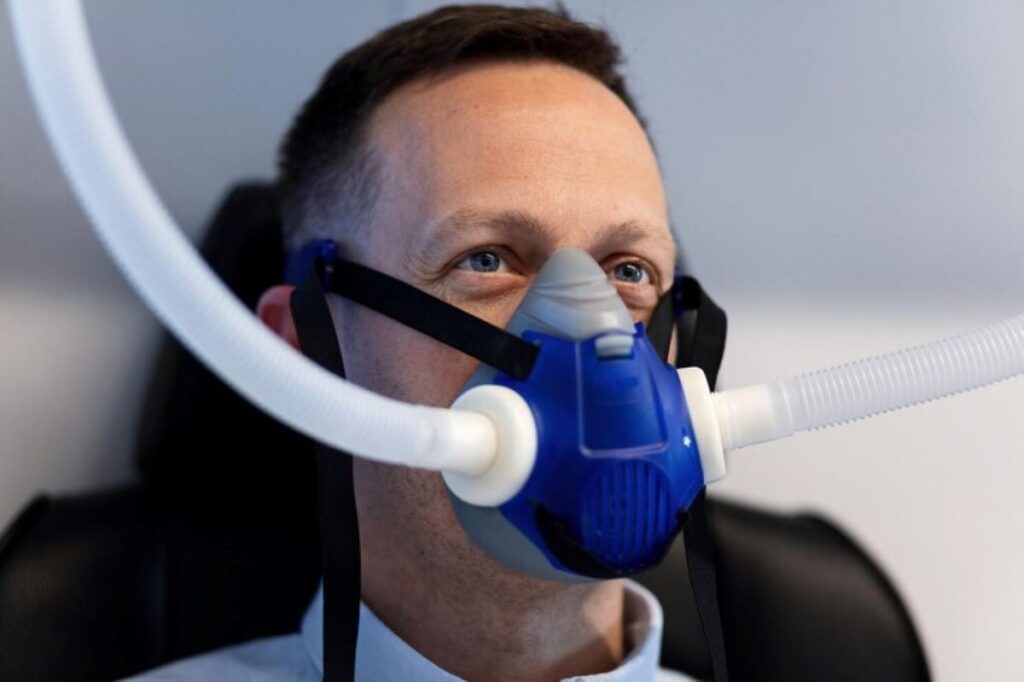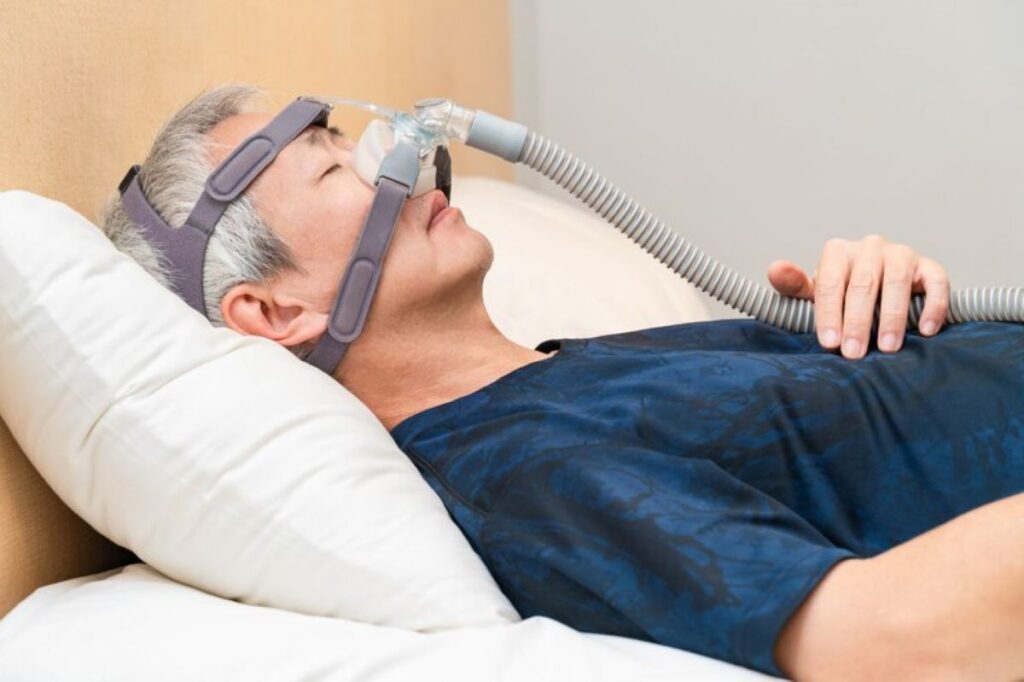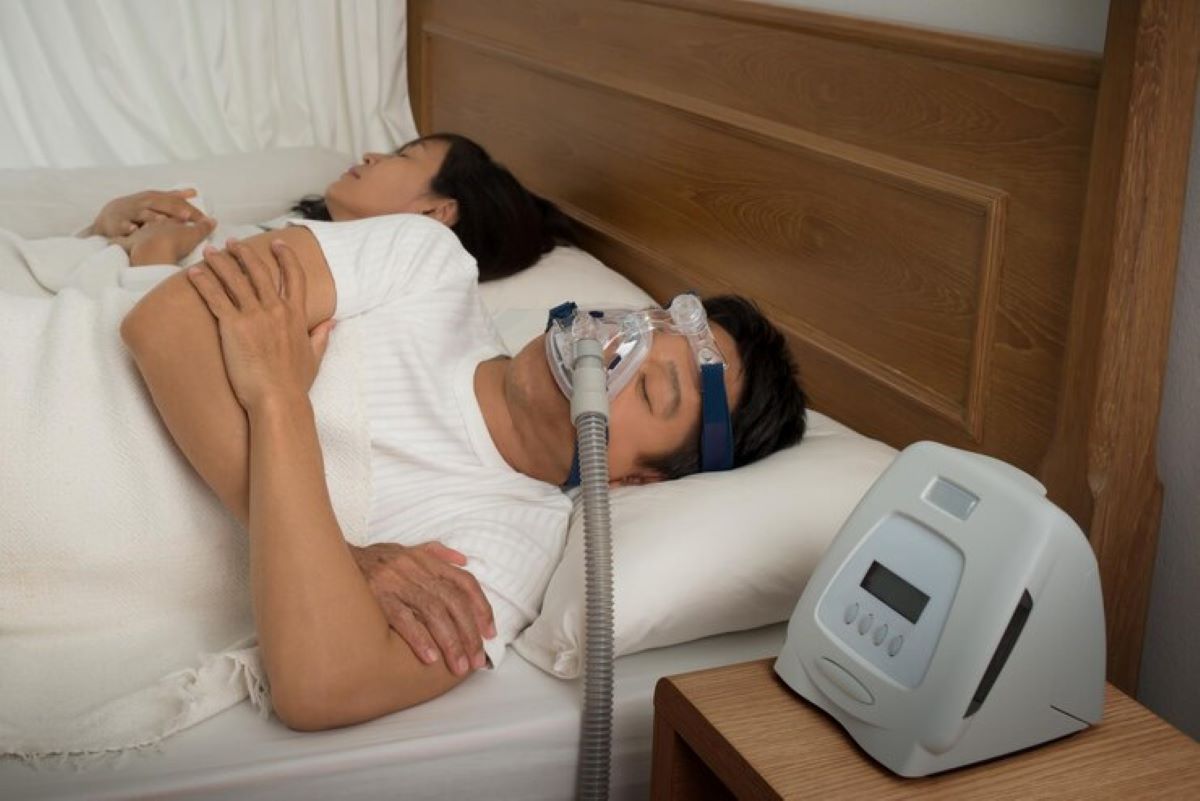Sleep apnea affects millions of people worldwide, making CPAP therapy a critical component of effective treatment. Your CPAP mask serves as the vital connection between you and the pressurised air that keeps your airways open throughout the night. Without the right mask, even the most advanced CPAP machine cannot deliver the therapeutic benefits you need.
The landscape of best CPAP masks 2024 has evolved significantly, with manufacturers introducing innovative designs that prioritise both CPAP comfort and CPAP performance. From magnetic clips that simplify assembly to memory foam cushions that adapt to your facial contours, today’s masks offer solutions for virtually every sleep style and breathing preference.
Finding the perfect balance between comfort and performance remains the cornerstone of successful CPAP therapy. A mask that seals effectively but causes discomfort will likely end up unused, whilst a comfortable mask that leaks air compromises your treatment. The Best CPAP Masks in 2024 for Comfort and Performance combine advanced materials, ergonomic designs, and user-friendly features to ensure you receive consistent therapy whilst maintaining a comfortable night’s sleep.
Understanding CPAP Masks and Their Role
CPAP mask function forms the cornerstone of successful sleep apnea treatment. These specialised devices create a sealed pathway that delivers continuous positive airway pressure directly to your respiratory system. The mask connects to a CPAP machine via flexible tubing, ensuring pressurised air reaches your airways throughout the night.
The pressurised air acts as a pneumatic splint, preventing the collapse of soft tissues in your throat that characterises obstructive sleep apnea. When you wear a properly fitted mask, the steady airflow keeps your airways open, allowing uninterrupted breathing patterns and restoring healthy sleep cycles.
Sleep apnea therapy devices rely heavily on mask effectiveness for treatment success. Your mask serves as the critical interface between the CPAP machine and your body, making it arguably the most important component of your therapy system. A well-functioning mask maintains consistent pressure delivery whilst minimising air leaks that could compromise treatment efficacy.
The right mask choice directly impacts your therapy compliance and long-term health outcomes. You need a mask that:
- Maintains an effective seal without excessive pressure
- Accommodates your natural breathing patterns
- Remains comfortable throughout extended wear periods
- Integrates seamlessly with your sleep position preferences
Poor mask selection often leads to therapy abandonment, with studies showing that comfort issues rank among the primary reasons patients discontinue CPAP treatment. Your mask becomes the determining factor between successful therapy and treatment failure.
Types of CPAP Masks Available in 2024
There are five main types of CPAP masks available in 2024. Each type is designed to cater to specific breathing patterns and sleep preferences. By understanding these options, you can find the best solution for your individual needs.
1. Full-Face CPAP Masks
Full-face CPAP masks cover both your nose and mouth, creating a complete seal around your facial features. These masks are ideal for:
- Mouth breathers
- Individuals experiencing nasal congestion
The advantage of full-face masks is that they deliver consistent air pressure regardless of how you breathe during sleep. However, some users may find the bulkier design restrictive.
2. Nasal Masks
Nasal masks sit over your nose only, providing a lighter alternative while still maintaining effective pressure delivery. This style is often preferred by side sleepers due to its reduced facial coverage. However, it’s important to note that mouth breathing can compromise the effectiveness of therapy with nasal masks.
3. Nasal Pillow Masks
Nasal pillow masks offer the most minimalist approach, featuring small cushions that seal directly into your nostrils. Stomach sleepers can benefit from this ultra-low profile design, which eliminates concerns about mask displacement during sleep. However, it’s worth mentioning that higher pressure settings may cause discomfort in the nostrils.
4. Total Face Masks
Total face masks provide comprehensive coverage extending beyond traditional full-face designs. These masks are specifically designed to accommodate users with facial hair or unique facial structures. While total face masks ensure reliable sealing, users may need to adjust to their substantial presence on the face.
5. Oral CPAP Masks
Oral CPAP masks target mouth-only breathing through a specialised mouthpiece design. This option is suitable for users who cannot tolerate nasal delivery methods, but availability remains limited compared to other styles.
Your breathing habits, sleep position preferences, and facial anatomy will determine which type of mask delivers optimal comfort and therapeutic effectiveness for you. Each style addresses specific challenges while also introducing unique considerations for your nightly routine.
Factors Influencing the Choice of Best CPAP Mask
Selecting the Best CPAP Masks in 2024 for Comfort and Performance requires careful evaluation of several critical factors that directly impact your therapy success. The most significant consideration centres on achieving an optimal fit that creates an effective seal whilst maintaining comfort throughout the night.
Mask Fit Factors and Seal Quality
Proper mask fit determines whether your CPAP therapy delivers the prescribed pressure effectively. A well-fitted mask creates a consistent seal that prevents air leaks, which can compromise treatment efficacy and cause disruptive noise. Key mask fit factors include:
- Facial structure compatibility – Your unique bone structure, cheek contours, and bridge height
- Cushion contact points – Areas where the mask touches your face must distribute pressure evenly
- Headgear tension – Straps should secure the mask without over-tightening
- Movement accommodation – The mask must maintain seal integrity during natural sleep movements
Poor fit leads to air leaks that trigger pressure compensations from your CPAP machine, creating uncomfortable air blasts and reducing therapy effectiveness.

Breathing Style Considerations
Your natural breathing patterns significantly influence mask selection success. Mouth breathers require full-face masks that cover both nose and mouth, preventing air escape and maintaining therapeutic pressure. Nasal breathers can utilise nasal or nasal pillow masks for less intrusive therapy.
Mixed breathers who alternate between nose and mouth breathing during sleep benefit from full-face options that accommodate both patterns without compromising treatment quality.
Top Full-Face CPAP Masks for Comfort and Performance in 2024
The ResMed AirFit F20 is a leading example of full-face mask design, featuring an innovative InfinitySeal cushion that adapts to the shape of your face throughout the night. This mask includes magnetic clips that make putting it on and taking it off easy, eliminating the frustration of traditional clip systems. The low-profile design reduces bulkiness while still maintaining an effective seal, allowing you to sleep comfortably in different positions.
Key features of the AirFit F20:
- InfinitySeal technology for consistent pressure distribution
- Magnetic clips for tool-free assembly
- Plush headgear with soft-touch fabric
- Quiet-Air vent technology minimising noise disruption
The ResMed AirFit F40 is the latest advancement in full-face mask design. Its ultra-compact frame sits 50% closer to your face compared to traditional models, creating a more natural sleeping experience. The memory foam cushion moulds to your unique facial structure, providing personalised comfort that reduces pressure points and skin irritation.
Advanced features of the AirFit F40:
- Memory foam cushion for customised fit
- Compact frame design for enhanced mobility
- Quick-release elbow for easy disconnection
- Adaptive seal technology
Both masks demonstrate how modern CPAP technology prioritises user comfort without compromising therapeutic effectiveness. The use of high-quality materials and innovative sealing mechanisms ensures you receive consistent pressure delivery while experiencing minimal mask awareness during sleep. Click here to get how to choose the best CPAP machine for your needs.
Material and Design Innovations Enhancing Comfort
The choice between silicone cushions vs memory foam significantly impacts your nightly comfort and therapy compliance. Each material offers distinct advantages that cater to different skin sensitivities and comfort preferences.
Silicone Cushions
Silicone cushions remain the gold standard for durability and easy maintenance. You’ll find they resist wear and tear whilst maintaining their seal integrity over extended periods. The non-porous surface prevents bacterial growth and simplifies cleaning routines. However, some users experience skin irritation or pressure marks, particularly those with sensitive skin conditions.
Memory Foam Cushions
Memory foam cushions conform precisely to your facial contours, creating a personalised seal that adapts to your unique features. This adaptive quality reduces pressure points and hot spots that commonly develop with traditional materials. The breathable nature of quality memory foam helps regulate temperature, preventing the clammy sensation many users report with silicone options.
Hybrid Designs
Modern hybrid designs combine both materials strategically – utilising memory foam for comfort zones whilst incorporating silicone elements for structural integrity. These innovations address the traditional trade-off between comfort and durability, offering you enhanced therapy experiences without compromising mask longevity.
Matching CPAP Masks to Sleep Positions
Your sleeping position significantly influences which best CPAP masks in 2024 for comfort and performance will work most effectively for your therapy needs. Different sleep positions create unique challenges for mask stability and comfort throughout the night.
Stomach Sleepers
Stomach sleepers face the greatest challenge when selecting CPAP equipment. Traditional full-face masks create excessive bulk that pushes against pillows, causing uncomfortable pressure points and potential air leaks. The best mask for stomach sleepers remains the nasal pillow design due to its minimal profile and lightweight construction.
Nasal pillow masks feature small, soft cushions that sit directly at your nostrils without covering your entire nose or face. This compact design allows you to sleep face-down without the mask pressing against your pillow or shifting position during sleep. The reduced contact area also minimises facial marks and skin irritation commonly experienced with bulkier alternatives.
Side Sleepers
Side sleepers benefit from masks with flexible headgear and swivel connections that accommodate head movement. Many modern nasal and nasal pillow masks incorporate 360-degree swivel elbows that prevent tubing from pulling the mask away from your face when you turn during sleep. You may like to visit https://www.rch.org.au/rchcpg/hospital_clinical_guideline_index/Safe_sleeping/ to get more about sage sleeping.
Back Sleepers
Back sleepers typically have the most flexibility in mask selection, as this position creates the least interference with mask positioning and seal integrity.

Practical Considerations: Sizing, Maintenance & Replacement
Proper CPAP mask sizing tips begin with understanding that an ill-fitting mask creates more problems than it solves. When your mask is too large, it shifts during sleep and breaks the seal, causing air leaks that reduce therapy effectiveness. Too small, and you’ll experience uncomfortable pressure points that lead to skin irritation, red marks, and potential sores.
You should measure your face dimensions carefully, paying attention to the distance from your nose bridge to your upper lip for nasal masks, or from forehead to chin for full-face options. Many manufacturers provide sizing guides with printable templates that help you determine the correct size before purchasing.
Key sizing indicators include:
- No air leaks around the cushion edges
- Comfortable pressure without overtightening
- No red marks lasting more than 30 minutes after removal
- Stable positioning throughout the night
Regular maintenance extends your mask’s lifespan and ensures optimal performance. Daily cleaning with mild soap and water prevents bacteria buildup, whilst weekly deep cleaning with CPAP-specific solutions maintains cushion flexibility. Replace cushions every 1-3 months, headgear every 6 months, and complete masks annually to maintain proper seal and hygiene standards.
Cost and Insurance Coverage Overview
The CPAP mask price range 2024 varies significantly based on design complexity, materials, and innovative features. Basic nasal pillow masks typically start around £40-50, whilst premium full-face models with advanced cushioning systems can reach £150-200.
Price breakdown by mask type:
- Nasal pillow masks: £40-80
- Nasal masks: £60-120
- Full-face masks: £80-200
- Total face masks: £120-180
Premium features that influence pricing include memory foam cushions, magnetic headgear clips, and anti-leak technology. Masks with silicone gel cushions command higher prices than standard silicone options due to enhanced comfort properties.
Most private health insurance plans in Australia cover CPAP equipment, including masks, when prescribed by a sleep specialist. Coverage typically includes one mask per year, though replacement schedules may vary between insurers. Medicare may provide partial coverage for eligible patients with diagnosed sleep apnoea.
You should verify your specific coverage details before purchasing, as some insurers require pre-approval or restrict coverage to particular brands. Many suppliers offer payment plans to help manage upfront costs whilst awaiting insurance reimbursement.
Role of Healthcare Providers and Fit Trials in Selecting the Best Mask
Healthcare provider guidance CPAP mask selection is crucial for successful sleep apnea therapy. Your respiratory therapist or sleep specialist has the knowledge to assess your facial structure, breathing patterns, and specific therapy needs. They accurately measure your face and identify potential pressure points that could cause discomfort or sealing problems.
Professional assessment removes the uncertainty in mask selection. Your healthcare provider considers factors you might miss, such as:
- Facial structure variations that affect mask compatibility
- Prescription pressure settings that influence mask performance
- Skin sensitivity concerns requiring specific materials
- Mouth breathing tendencies during sleep
Many providers offer trial programmes allowing you to test different masks before committing to a purchase. These trials typically last 30 days, giving you enough time to evaluate comfort during actual sleep conditions. Air Liquide Healthcare’s extensive network of 152 diagnostic and therapy service locations across Australia ensures you have access to professional fitting services and ongoing support.
The Best CPAP Masks in 2024 for Comfort and Performance require professional validation to match your individual needs effectively.
Conclusion
Selecting the best CPAP mask 2024 requires patience, professional guidance, and willingness to explore different options. You deserve a mask that transforms your sleep therapy from a nightly struggle into comfortable, effective treatment.
The Best CPAP Masks in 2024 for Comfort and Performance combine innovative materials, thoughtful design, and proven reliability. Yet the perfect mask remains highly individual—what works brilliantly for your neighbour might not suit your unique facial structure or sleeping habits.
Don’t settle for discomfort or poor compliance. Work closely with your healthcare provider to trial multiple masks, explore different styles, and fine-tune your fit. Your commitment to finding the right mask today determines the quality of your sleep therapy for years to come.
